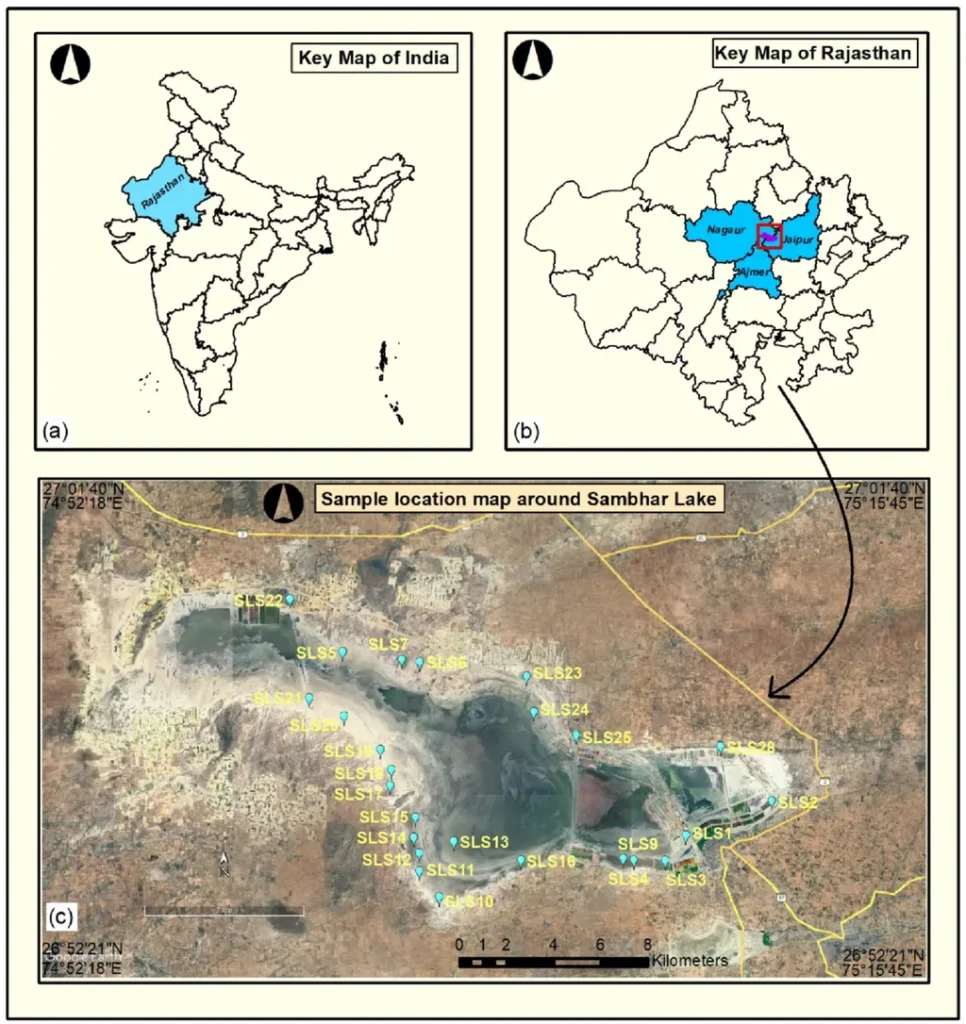In the heart of Rajasthan, India’s largest inland saline lake, Sambhar Lake, is facing an unseen threat. Beneath its shimmering surface, heavy metals are seeping into the sediments, posing potential ecological risks that could ripple through the region’s agricultural sector. A recent study published in *Discover Geoscience* sheds light on this growing concern, offering a roadmap for sustainable management and pollution control.
Researchers, led by Sudipta Ghosh from the Geological Survey of India, North Eastern Region, collected and analyzed 25 sediment samples from the lake. Using advanced techniques like X-ray fluorescence (XRF) spectrometry, they mapped the spatial distribution of heavy metals—lead (Pb), nickel (Ni), chromium (Cr), copper (Cu), zinc (Zn), and cobalt (Co). The findings reveal a concerning trend: concentrations of chromium and zinc are notably higher than background levels, with hotspots primarily along the lake’s periphery.
The study employs a suite of indices—contamination factor (CF), enrichment factor (EF), geo-accumulation index (Igeo), pollution load index (PLI), and potential ecological risk index (PERI)—to assess contamination levels and ecological risks. While the overall pollution level is classified as slight, with PLI values ranging from 0.52 to 1.11, the ecological risk is deemed low, with PERI values between 15.37 and 28.09. However, the presence of lead, copper, and cobalt in the sediments is largely attributed to domestic waste, sewage, and agricultural runoff, highlighting the need for targeted interventions.
“Our findings indicate that the sources of heavy metals are both geogenic and anthropogenic,” Ghosh explains. “This dual origin complicates mitigation efforts but also provides a clear path forward for addressing both natural and human-induced contamination.”
The implications for the agricultural sector are significant. Sambhar Lake is a vital resource for surrounding communities, supporting irrigation and livestock. Heavy metal contamination in the lake’s sediments could seep into the water supply, affecting soil fertility and crop yields. Farmers relying on the lake for irrigation may face long-term challenges if contamination levels continue to rise.
Multivariate statistical analyses, including Pearson correlation, principal component analysis (PCA), and hierarchical cluster analysis (HCA), were employed to trace the sources of these metals. Spatial mapping with GIS further illustrated the distribution patterns, providing a comprehensive overview of the contamination landscape.
This research not only offers a baseline for pollution control but also underscores the importance of sustainable management practices. As Ghosh notes, “Understanding the sources and distribution of heavy metals is the first step toward developing effective strategies for protecting Sambhar Lake and the communities that depend on it.”
The study’s findings could shape future developments in ecological risk assessment and pollution management, particularly in regions with similar environmental challenges. By identifying the root causes of contamination, policymakers and agricultural stakeholders can implement targeted measures to safeguard water quality and soil health.
As the agricultural sector continues to evolve, the need for sustainable practices becomes increasingly urgent. This research serves as a timely reminder of the delicate balance between human activity and environmental health, offering a blueprint for preserving vital resources for future generations.

